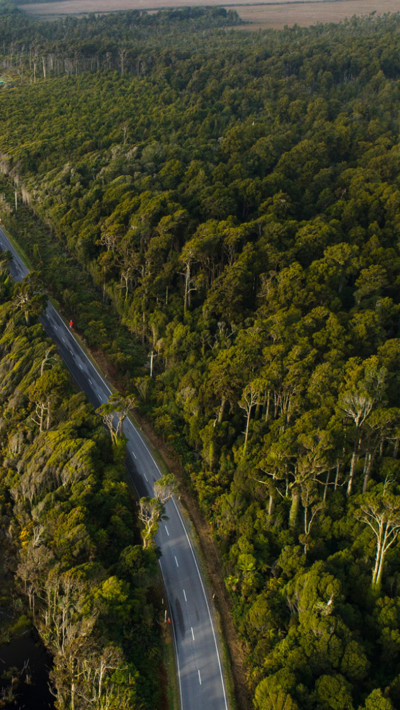Speak to our experts
Contents
The Climate Change Commission has released its draft advice to Government on the second Emissions Reduction Plan (ERP 2), covering the budget period 2026 to 2030.
The Commission’s starting point is that the 400+ actions and policies developed in ERP 1 do not go far enough and will need to be added to and strengthened to meet New Zealand’s emissions reduction targets. ERP 2 must also deliver on the legislated 2030 target for biogenic methane (at least 10% down from 2017 levels by 2030).
We summarise the main points of interest to businesses in the 220-page document. Submissions close on 20 June 2023.
Scrutiny of the role of forestry – the gross vs net emissions debate
The Commission is concerned that New Zealand is relying too heavily on forestry to ‘net off’ our gross emissions to achieve our emission reduction targets. It considers current policies are likely to result in extensive afforestation in the near term and that this risks distracting businesses from investing in efforts to reduce emissions at their source, while providing only a temporary solution for long term emission reduction targets.
To resolve these risks the Commission makes a number of proposed recommendations to reorient climate policy towards gross emissions reductions – i.e. reducing the volume of greenhouse gases (GHG) emitted, rather than expanding forestry activities to draw down already emitted gases. Key among the recommendations are that the Government:
- Adopt specific gross GHG emissions targets in the second and third emissions budgets, without limiting policy drivers to the current net GHG emission reduction budgets and targets;
- Communicate indicative levels of both gross emissions and forestry-related emissions removals out to 2050; and
- Amend and restructure the Emissions Trading Scheme (ETS) to remove or reduce the incentives for exotic forest planting.
These recommendations, if accepted, would have far reaching economic consequences, particularly for the forestry sector, where the long term forestry investments have been made based on existing ETS settings and where recent high ETS unit prices have driven extensive investment in carbon forestry. The Government already has a review of the ETS underway and both the approach to carbon forestry and the gross versus net emissions reduction debate is undoubtedly on the political agenda. This will raise important and challenging issues of equity, investment certainty, compliance with Te Tiriti and impact on Māori, particularly given the detrimental impact of prior ETS policy settings on the value of Crown forest assets that were transferred to Maori as commercial redress under Treaty settlements.
A new approach to industrial allocation under the ETS
The Commission also queries other current ETS settings – this time related to industrial allocation. Under the current industrial allocation policy, a relatively small number of emissions intensive industrial operators who are exposed to international competition receive free emissions units to enable them to compete with imports/exports without shifting production overseas. The Commission stops short of a specific recommendation on the policy point but queries proportionality behind the purpose of the policy: emissions leakage – the relocation of high emitting industry to other jurisdictions with less stringent climate laws. The Commission suggests that that the global position has changed since the industrial allocation policy’s inception in 2009 and suggests that the Government’s current reform of industrial allocation (being the Climate Change Response (Late Payment Penalties and Industrial Allocation) Amendment Bill - which is currently at the Select Committee stage) does not adequately reset the policy. Those corporates who receive industrial allocation have likely already submitted on the reform Bill but are also likely to wish to engage on the Commission’s advice – particularly those who face real emissions leakage risk.
Key sectoral recommendations
Agriculture
The emphasis in the ERP 2 Draft Advice is on delivering agricultural emissions pricing by 2025 to incentivise gross emissions reductions, whether via a variation on the Government’s response to industry’s He Waka Eke Noa proposal or agriculture moving into the ETS (the so-called “legislative backstop”).
The Commission recognises the challenges facing the sector and recommends enhancement of advisory and extension services to farmers to enable them to respond to pricing, emerging technologies and other changes.
Energy
The Commission recommends:
- Banning new fossil fuel installations, including commercial coal-fired boilers and gas-fired hot water heating in homes, except when there is no other option. This recommendation was in the Commission’s initial draft advice to Government on ERP 1 but was not retained in the Commission’s final advice or included in the Government’s EPR 1 policies.
- Prioritising and accelerating renewable electricity generation developments, and ensuring electricity distribution networks can support growth and variability of demand and supply.
- Pursuing more widespread process heat decarbonisation and establishing mechanisms for other industrial sectors and processes to decarbonise.
Other sectors – a snapshot
The Commission also doubles down on previous recommendations in:
- Transport, with a focus on developing an integrated public and active transport network, removing barriers to scaling up EV charging and developing incentives to accelerate the uptake of low emissions commercial vehicles.
- Built environment, with an integrated planning system that builds urban areas upward and mixes uses while incrementally reducing climate risks. The ERP 2 Draft Advice also advocates incentivising retrofits to deliver lower emissions buildings.
- Waste, with policy changes to achieve optimal use and efficiency of landfill gas capture systems and to improve the accuracy of measurement data.
What happens now?
The Commission must provide its final advice to Government by 31 December 2023. The Government must then deliver its ERP 2 by the end of 2024 with the policies and actions in the second budget period commencing on 1 January 2026.
In practice, the Government’s first ERP, finalised in May 2022, relied heavily on the Commission’s advice, with policy often tracking alongside the Commission’s work before the ERP itself was finalised.
The current consultation therefore represents an opportunity to shape the direction of travel early.
While several of the draft recommendations will be familiar in tone and strategic direction, the proposed ETS changes and the ‘gross vs net’ rethink of the role of forestry represent major changes that could have far-reaching impacts. Closer examination will be needed of the various policy options and their likely impact on particular sectors and regions with strong forestry interests.
The emphasis on the need to price agricultural emissions was to be expected, with the outcome highly reliant on the ongoing dialogue between industry and government, and on the outcome of the general election.
Energy sector players should consider the practical effects of the renewed recommendation regarding banning new fossil fuel (including gas) connections and the detail of proposed changes to renewable consenting for generation and distribution networks.
Please contact us if you’d like support engaging with this process or if you would like more targeted advice on how the Commission’s recommendations impact your business.






















































